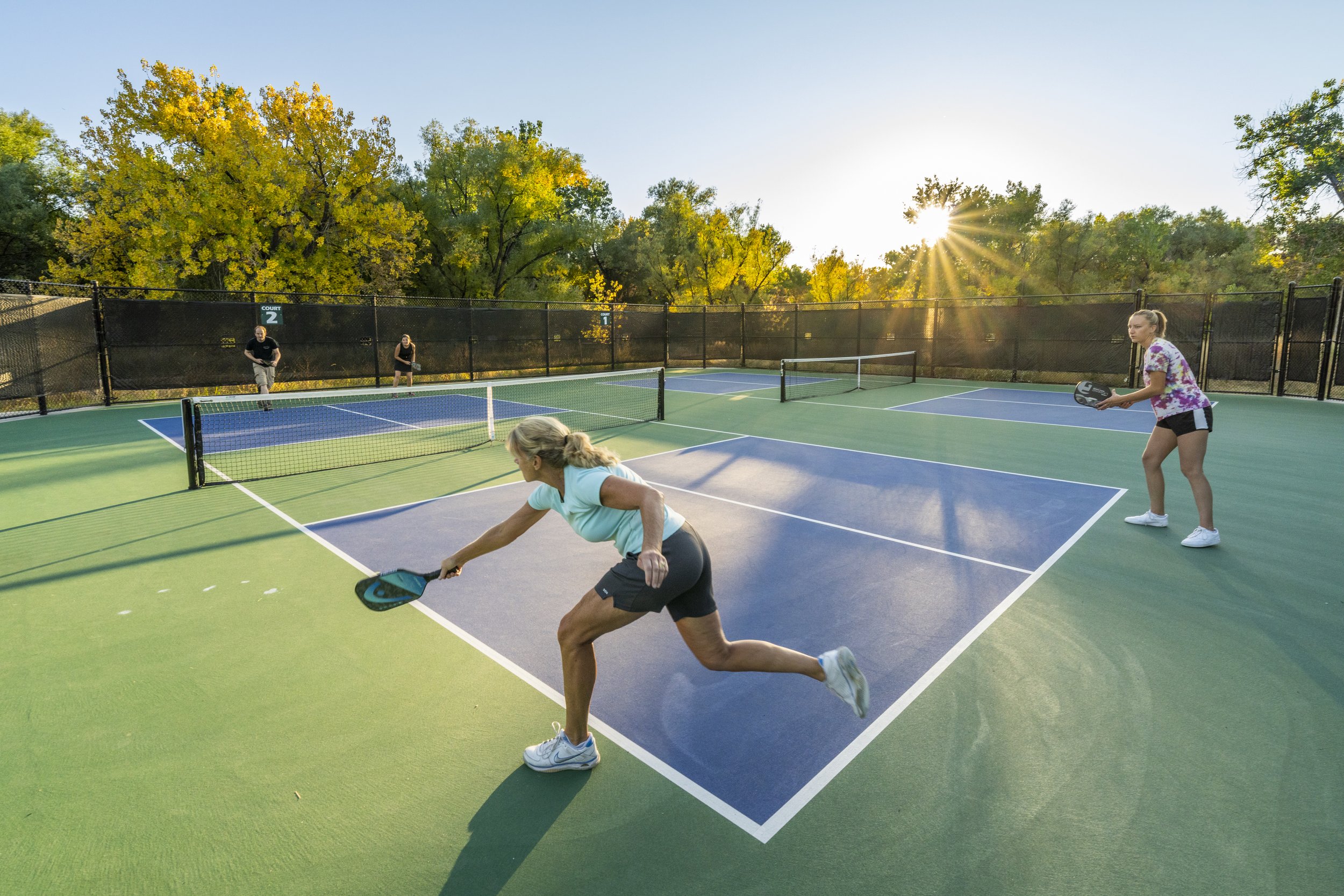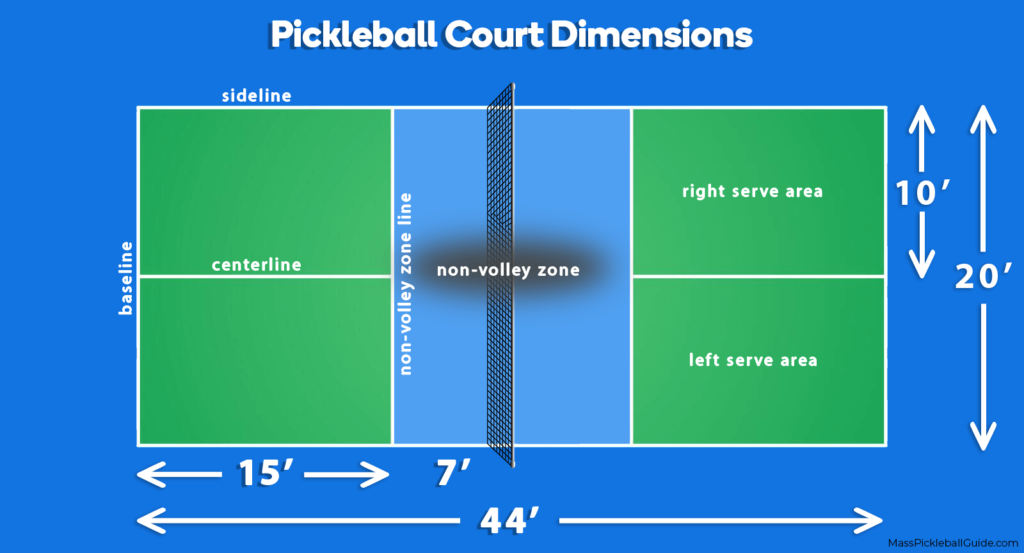Comprehending the Timeline for Your Pickleball Court Construction Project
Navigating Laws for Pickleball Court Building And Construction in Your Location
Constructing a pickleball court in your area calls for a nuanced understanding of various regional laws, including zoning regulations, building licenses, and safety and security standards. Involving with local authorities and the neighborhood is critical for guaranteeing conformity and cultivating support.
Understanding Neighborhood Zoning Laws
When thinking about the building and construction of a pickleball court, understanding regional zoning legislations is crucial to making sure compliance and preventing prospective lawful concerns. Zoning regulations dictate exactly how land can be made use of and usually include requirements pertaining to leisure facilities. These laws can vary significantly by municipality, influencing elements such as court positioning, noise, size, and lighting degrees.
Prior to starting building, it is necessary to consult the local zoning board or preparation division to identify the details guidelines that put on your building. Particular areas might restrict recreational tasks, while others might need particular permits or adherence to particular standards. It is additionally crucial to think about problems, which identify just how much structures must be from property lines or various other buildings.
Additionally, exclusive advancements, such as property owner associations (HOAs), might impose their very own policies concerning the building and construction and use pickleball courts. Understanding these laws can stop costly alterations or litigation down the line. Involving with local stakeholders and area members can give valuable insights and foster support for your task, guaranteeing that it lines up with the community's demands and expectations.
Acquiring Necessary Building Allows
How does one navigate the intricacies of getting needed structure permits for a pickleball court? Normally, you will certainly need to send a comprehensive website strategy that lays out the recommended court measurements, materials, and layout.

As soon as permits are gotten, it is important to follow any examination schedules and demands throughout the building and construction phase. Preserving interaction with neighborhood authorities will help with a smoother authorization procedure and help avoid prospective troubles. By thoroughly preparing and understanding the permitting landscape, you can effectively browse the intricacies involved in constructing a pickleball court while staying certified with all neighborhood laws.

Assessing Environmental Impact
When planning the building of a pickleball court,A comprehensive evaluation of ecological effect is crucial (Pickleball court construction). This examination helps identify potential results on local ecological communities, water resources, and area visual appeals. Trick elements to take into consideration include site option-- ensuring that the court is not improved environmentally delicate land, such as wetlands or habitats for jeopardized varieties
Soil stability and water drainage patterns should be evaluated to stop erosion and water pooling, which might adversely influence bordering vegetation and wildlife. Furthermore, the choice of materials is vital; going with green and lasting alternatives reduces environmental damage.
The my latest blog post application of efficient stormwater monitoring techniques is an additional essential aspect, as it helps mitigate runoff and sedimentation. Engaging with local environmental agencies can provide valuable insights into guidelines and ideal methods certain to your location.
Finally, neighborhood input can be helpful in recognizing any type of regional environmental issues and fostering support for the task. By performing a detailed ecological effect evaluation, stakeholders can ensure that pickleball court construction straightens with lasting methods and contributes positively to the area's eco-friendly health and wellness.
Following Safety Standards
Making certain conformity with security standards is crucial for the effective building and operation of a pickleball court. Complying with well established security regulations lessens the danger of injuries and crashes, guaranteeing a secure atmosphere for players.
Trick safety criteria include correct court dimensions, surface area my response products, and lighting needs. The court must meet the official measurements of 20 feet large by 44 feet long for doubles play, with proper buffer areas to avoid injuries from wayward balls. Pickleball court construction. The surface needs to be built from non-slip products to enhance grip and reduce the probability of drops
Furthermore, lights should be ample for evening play, supplying consistent illumination to prevent darkness that can hinder exposure. Neighborhood building codes may additionally dictate certain needs for fencing and web elevation to ensure player security and protect against unauthorized access to the court location.
Normal evaluations and maintenance are crucial to support these requirements with time. By prioritizing safety compliance, court owners not only secure gamers yet also foster a positive credibility within the neighborhood. This dedication to safety and security can encourage greater participation and enjoyment of the sport, eventually adding to its development and sustainability.

Engaging the Area in Planning
Community participation in the drawing board of pickleball court building can dramatically enhance the job's total success. Engaging local residents and stakeholders promotes a feeling of possession and encourages collaborative decision-making, which can lead to wider support for the campaign.
To properly involve the neighborhood, organizers must launch public conferences or workshops, providing a platform for homeowners to voice their opinions and preferences concerning place, style, and features. Studies and comments types can likewise be used to collect insights from a larger you could check here audience, guaranteeing that diverse perspectives are thought about.
Furthermore, developing a neighborhood consultatory board can help with ongoing discussions and address concerns throughout the preparation procedure. This board can consist of agents from various demographics, such as local colleges, entertainment companies, and neighborhood watch, consequently magnifying neighborhood representation.
Effective interaction is crucial; updates regarding the project need to be routinely shared via e-newsletters, social networks, or regional bulletins. By focusing on neighborhood engagement, organizers can cultivate enthusiasm, minimize prospective opposition, and develop a pickleball facility that truly reverberates with local worths and requirements. This collaborative strategy not only improves the job but additionally strengthens community connections.
Verdict
In conclusion, navigating the complexities of pickleball court building and construction necessitates an extensive understanding of regional laws, including zoning laws, building licenses, and security criteria. By sticking to these standards and cultivating collaboration, successful application of pickleball courts can be accomplished, advertising entertainment possibilities and area health.
Constructing a pickleball court in your area requires a nuanced understanding of various regional policies, including zoning legislations, building licenses, and security requirements.When thinking about the building of a pickleball court, comprehending regional zoning legislations is important to making sure conformity and preventing prospective legal issues. By thoroughly preparing and recognizing the permitting landscape, you can effectively navigate the complexities involved in constructing a pickleball court while continuing to be certified with all neighborhood guidelines.
In final thought, navigating the intricacies of pickleball court building and construction demands a thorough understanding of neighborhood guidelines, including zoning laws, structure authorizations, and security standards. By sticking to these standards and fostering collaboration, effective application of pickleball courts can be achieved, advertising leisure opportunities and area wellness.